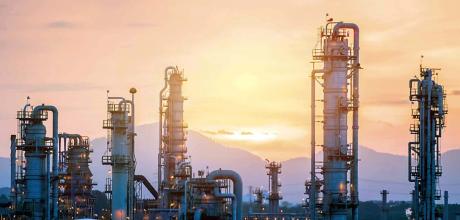Cracks in the system
Strong demand amid oil refinery shutdowns at the heart of rocketing petrol prices
Whether it’s over politics, mandated vaccinations, or the precise moment free speech becomes hate speech, the conversations we’re having can be pretty divisive. Yet there’s one thing just about all of us agree on: the price of petrol is way too high. Rounded off to the nearest rand, the average inland price of 95 Unleaded rose from R15 to R20/litre in 2021, an already hard-to-swallow 33% jump. Unfortunately, this upward trend has only gathered momentum this year, rising 20% from R20 to R24 in the first six months alone, with all indications pointing to a R30/litre Christmas present.
Even more galling is that without a major reduction in demand, fuel prices might stay this high for months, even years. But just why is the petrol price so high?
Higher oil prices are everyone’s fall guy. They’re being driven by OPEC+ countries’ slow and troubled ramp up of output, various supply constraints (e.g. the Libyan oil blockade), the rapid return to pre-pandemic global demand, concerns over low reserve levels across the world, and all the geopolitical consequences of Russia’s invasion of Ukraine.
But the oil price alone is not to blame. After peaking at $123 per barrel in March, the price of Brent crude has retreated and at the time of writing was trading at around $113. It’s worth noting here that March’s high is still some way off the $146 peak of 3 July 2008, when a litre of 95 Unleaded cost just R10!
Back then, one US dollar cost R7,70. Midway through 2022, one dollar was trading at around R16,60. Yes, there’s an element of rand weakness to factor in, but there’s a third crucial element affecting the price of fuel: the cost of refining it. It would make everything far easier, but our engines simply don’t run on crude. When the pandemic lockdowns first took hold, demand plummeted, causing unprecedented storage issues and massive stockpiling of refined transport industry fuels. Refineries worldwide were forced to radically reduce output or shut operations altogether.
As the world emerged from its forced slumber, demand for passenger car and aviation fuels came roaring back. While oil extraction is particularly low-tech and easily restarted, refineries are more complex. The investment required to maintain, reconfigure or recommission these refineries has resulted in some not being restarted at all. The mothballing of ageing or financially less viable refineries means that old refining capacity has been lost faster than new capacity has been added. On the global stage, the International Energy Agency puts the total loss at 1,9 million barrels per day, the first fall in capacity in 30 years.
This is also happening right on our doorstep. The February 2022 announcement of an indefinite pause in operations, and possible outright sale of South Africa’s largest refinery, BP South Africa and Shell Refining Africa’s jointly owned SAPREF refinery, has cut local capacity by 35% or 180 000 barrels of petrol per day. It’s another big blow to South Africa’s crude-oil refining industry that, for years, has had to cope with low government- regulated profit margins, rolling electricity blackouts, underinvestment and ageing plants.
Consequently, South Africa’s reliance on refined fuel imports has ballooned to around 60% of national consumption, seriously limiting the government’s ability to control refining margins in the way it once could. We will likely have to get used to paying R30/litre.
You cannot blame investors either. In an increasingly mandated electric-vehicle world with looming bans on the sale of fossil-fuelled cars, who would have the appetite to pump money into building new refining capacity, or even to recommission older plants?
The effect of the aforementioned capacity shrinkage is demand now outstripping supply, with analysts from Goldman Sachs calling it “an unprecedented refining shortage”. When this happens, the price goes up … it’s Economics 101. The refineries that survived the worst of the pandemic are now cashing in. So, while the oil price itself is one issue, a massive spike in the average refining margin has cranked up the pressure on pump prices even more. Simply put, refining margins are measured using what’s known as the “crack spread”; the difference between the purchase price of a barrel of crude and the selling price of the mix (spread) of refined products, usually petrol and heating oil, cracked (extracted) from that barrel. According to a Bloomberg report, between 1985 and 2021, the average crack spread yielded a margin of just over $10 per barrel, occasional peaks circa $30, and a one-time high of nearly $40 in 2012. At the time of writing, the average crack spread margin was nearing $55 per barrel – and climbing.
If you’re looking for an investment project, there’s a little refinery just outside Durban with your name on it.


